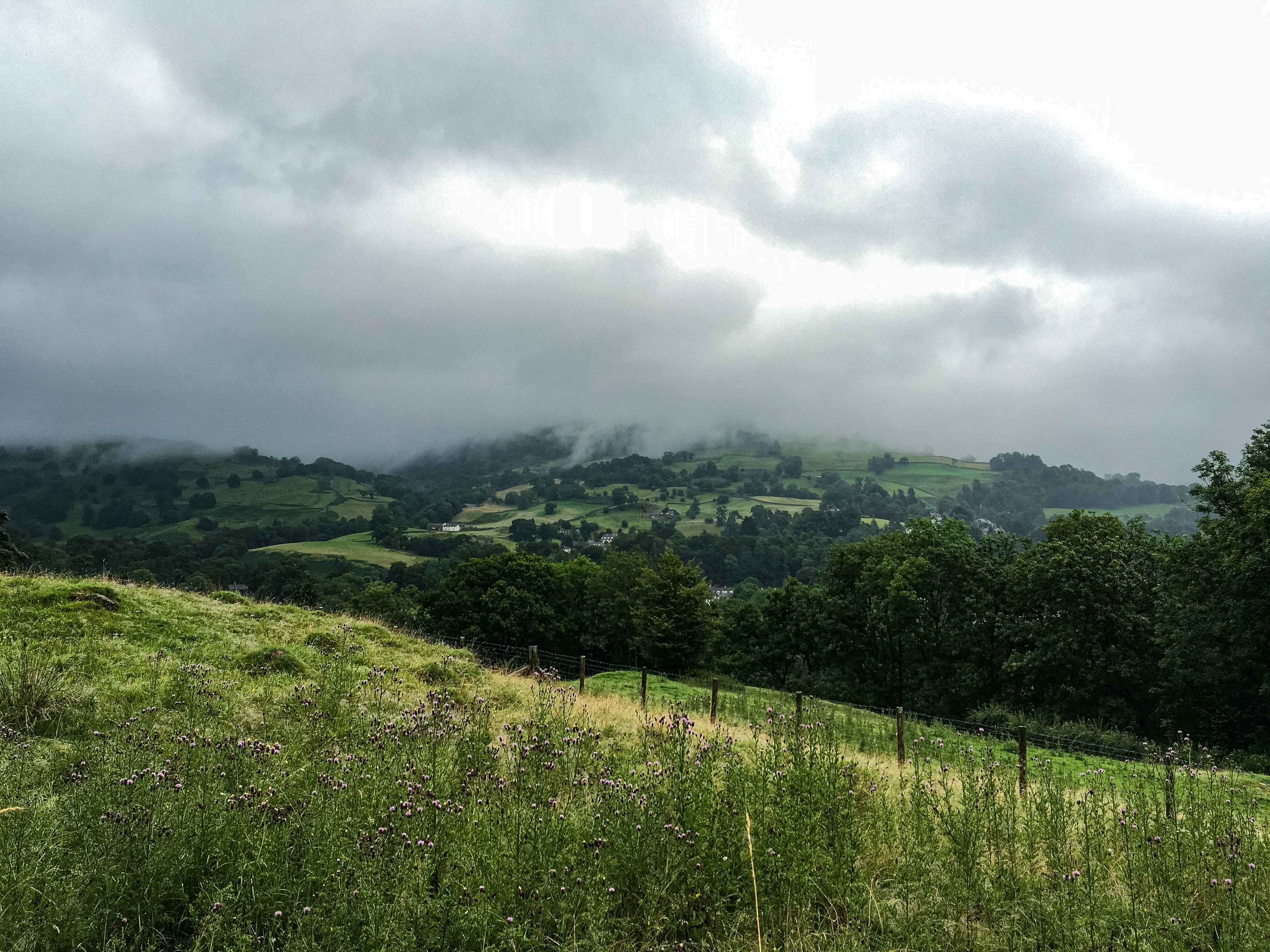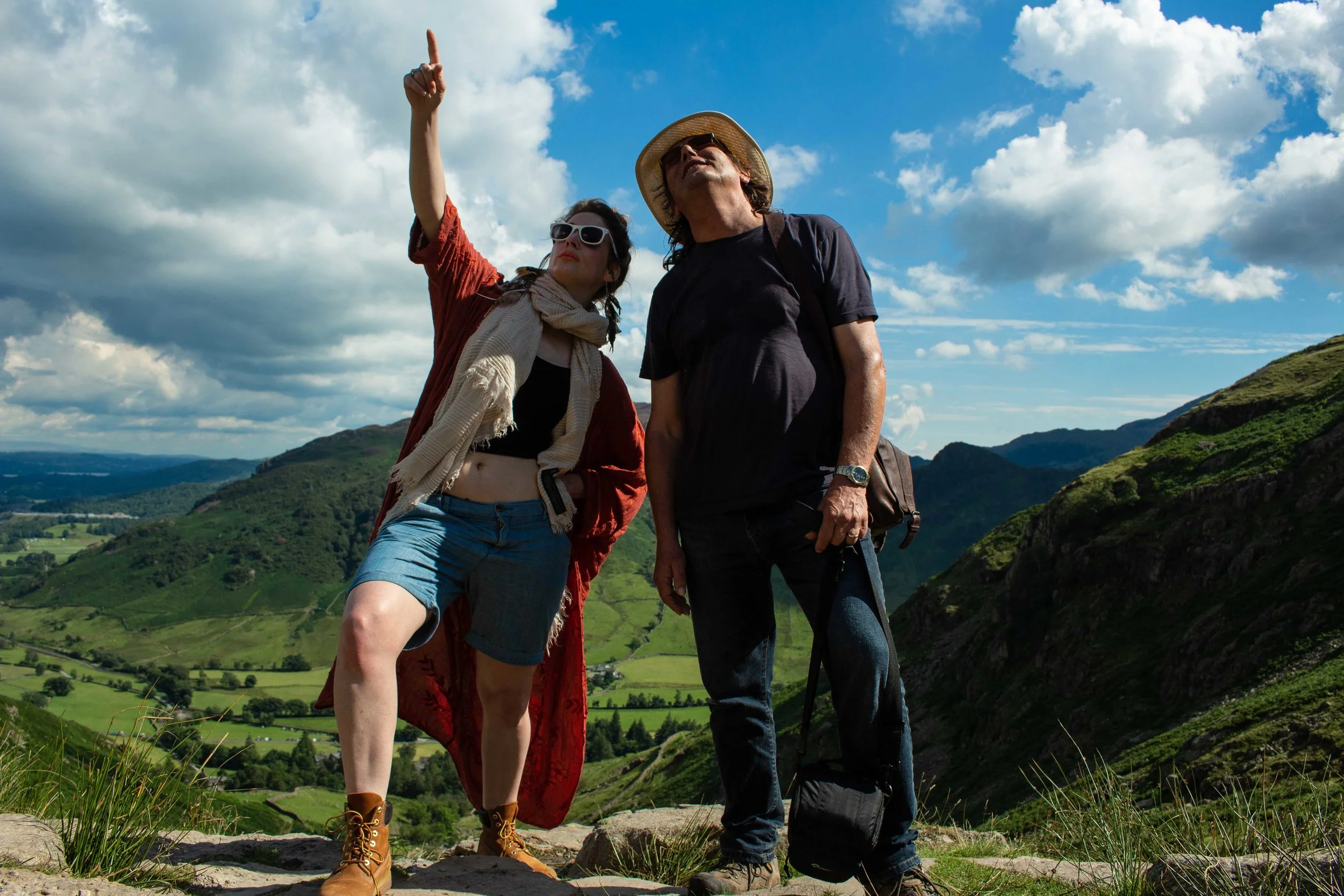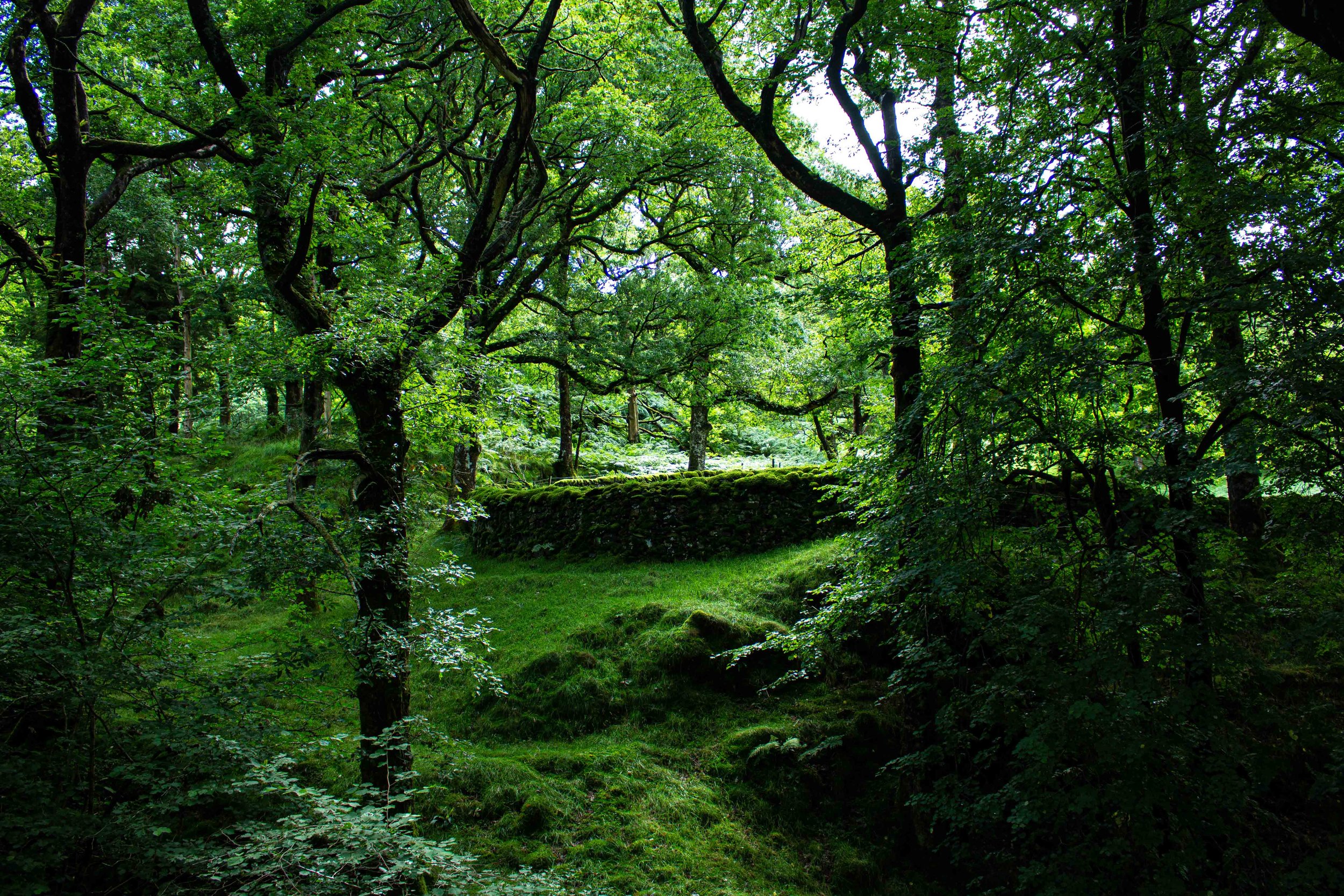The Lake District | Must-visit places in the UK
Seeking solace, healing, sanctuary?
Wanders near Ambleside, Lake District UK
You’ll find it in the Lake District, in the north of the UK. This is where you go to breathe, smell the freshness, know yourself. I’ve only been a handful of times, but each moment was a pivotal one. This green picture is my favourite—not one of the rolling hills, the tarns, or the expanse—but pixieland. There’s something about the entirely green carpet that takes me right into old English legends and fairytales.




But let’s talk about geology
Volcanoes, glaciers, melt water—and about 500 million years of uplifting and folding geological processes created these rolling hills, deep lakes, and vast landscapes. Very crudely and broadly speaking, the smoother and more rounded the peak, the older the mountain.
These peaks have had time to form soil, weather, and smooth. Younger mountains tend to be jagged, not just because of this, but also because they develop faster—jagged edges tend to come from glaciers and landslides. The Lake District is about five times the age of the Himalayas.
The lake pictures below include a few “experiments” between the Canon DSLR and iPhone. By “experiment”, I really just mean I took the same picture on two cameras. I haven’t played much with the edits in Lightroom, but it’s a cool (if basic) example showing the difference between how the cameras work with contrast.







Wildlife in the Lakes
Dragonflies! Or, rather, common blue damselflies. Maybe even azure damselflies, but I’m not good enough to really know for sure. Apparently the main difference is that the common blue has more of a blue body and the azure more of a black body. No surprises there. These friends below seem more blue to me.
Interesting fact: The female can morph. Sometimes she’s blue, like the males, sometimes she’s dull brown or green. This helps them limit the attention they get when near the water and ready to mate. The female also has this “Christmas tree” type shape on S8 of her body.
Other friends made during this trip included cows that just hung out by a tree in a small lake and pollen beetles. I think the little one I photographed below (using a microscope lens on my iPhone) is in the Phalacridae family, since it’s small and round. I’ve not found a ton of info on them, one blog even labelling them “unspectacular”, but it seems like they’re whole deal is to eat pollen which helps contribute to pollination.





























